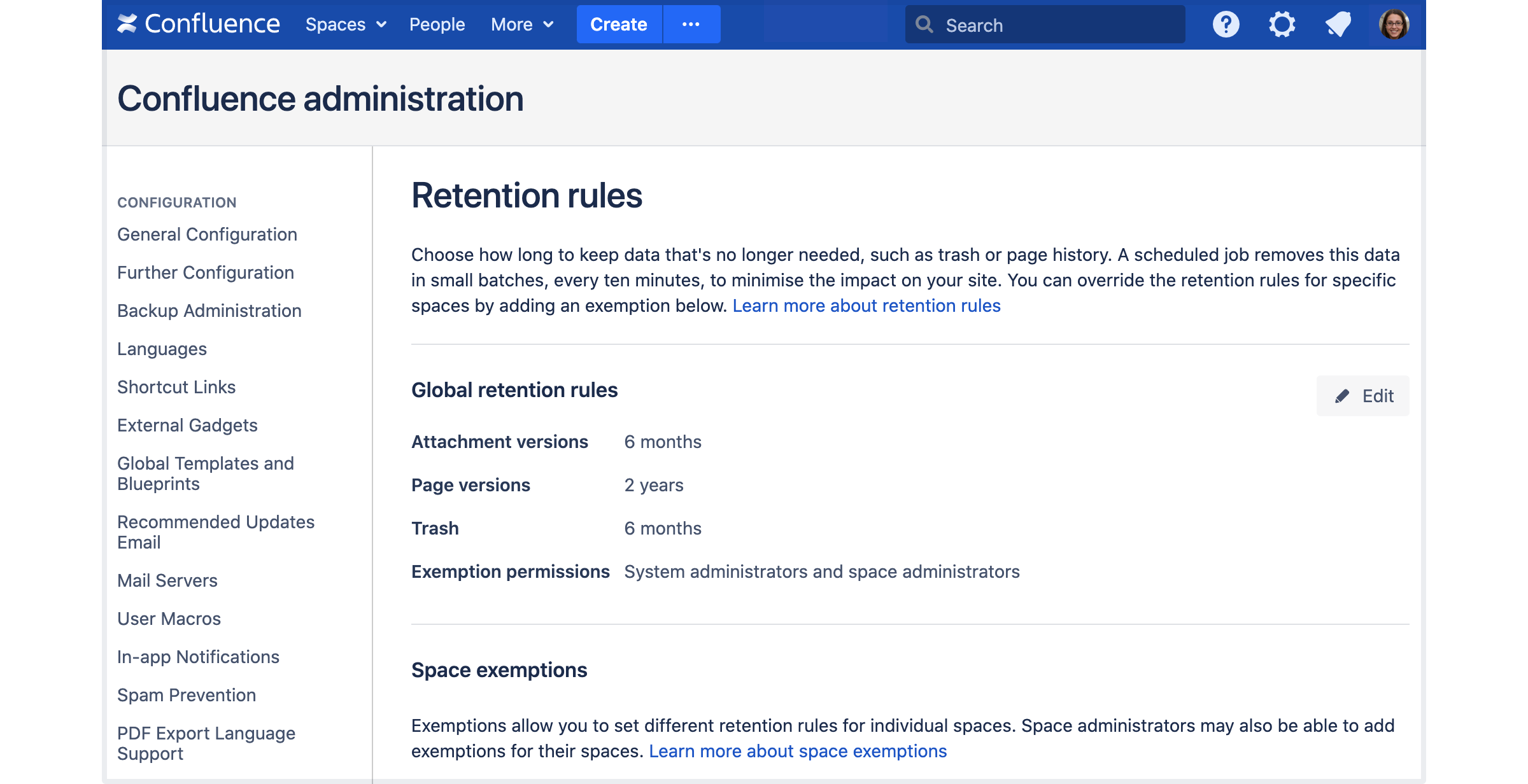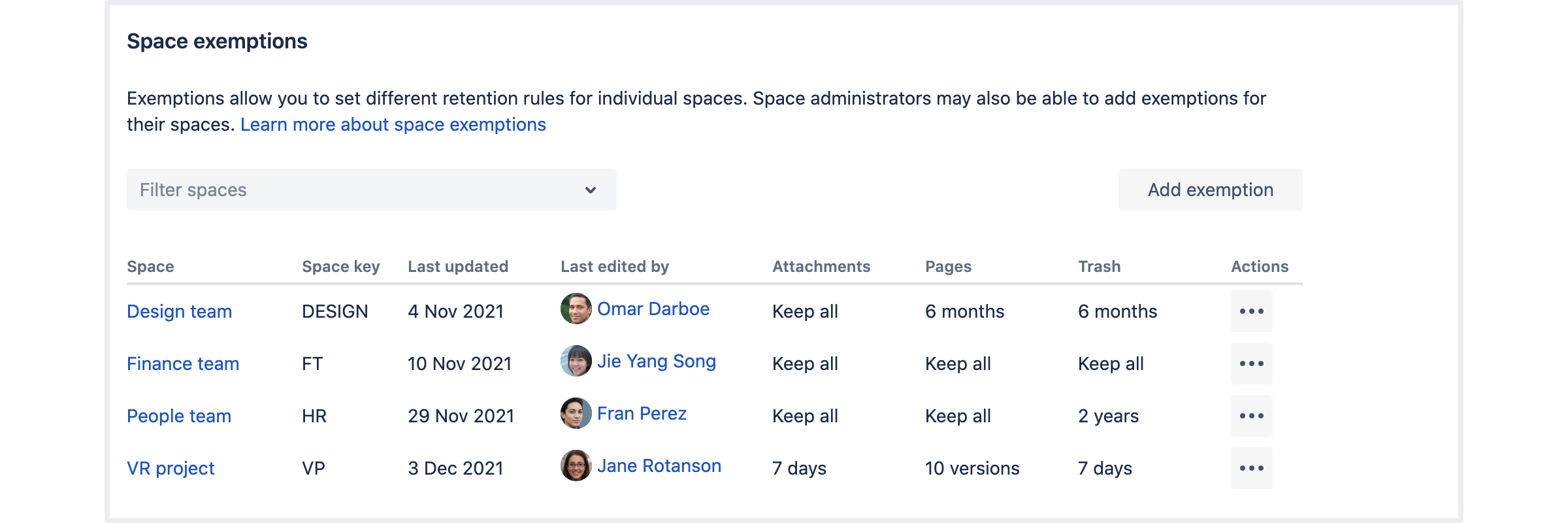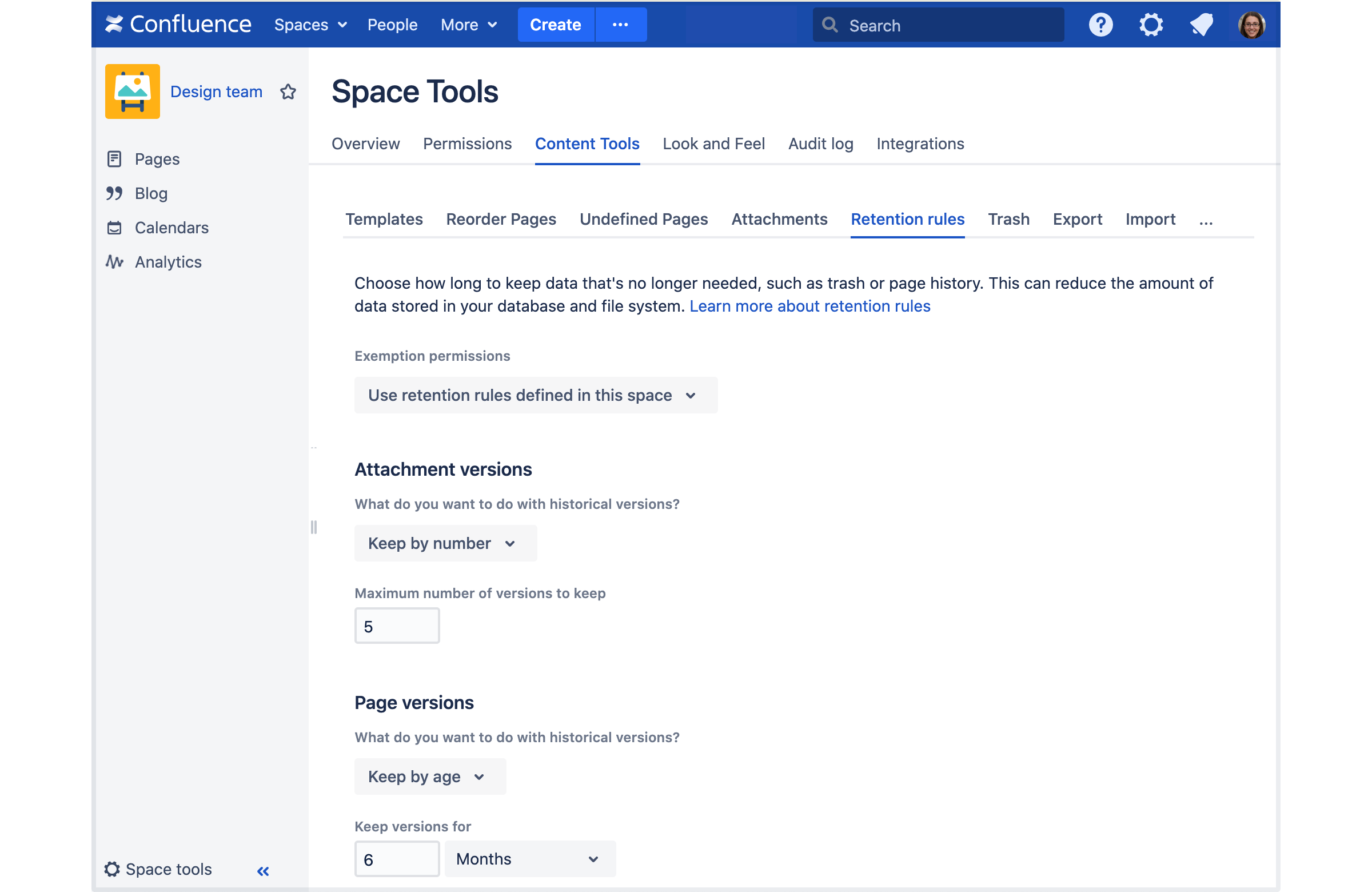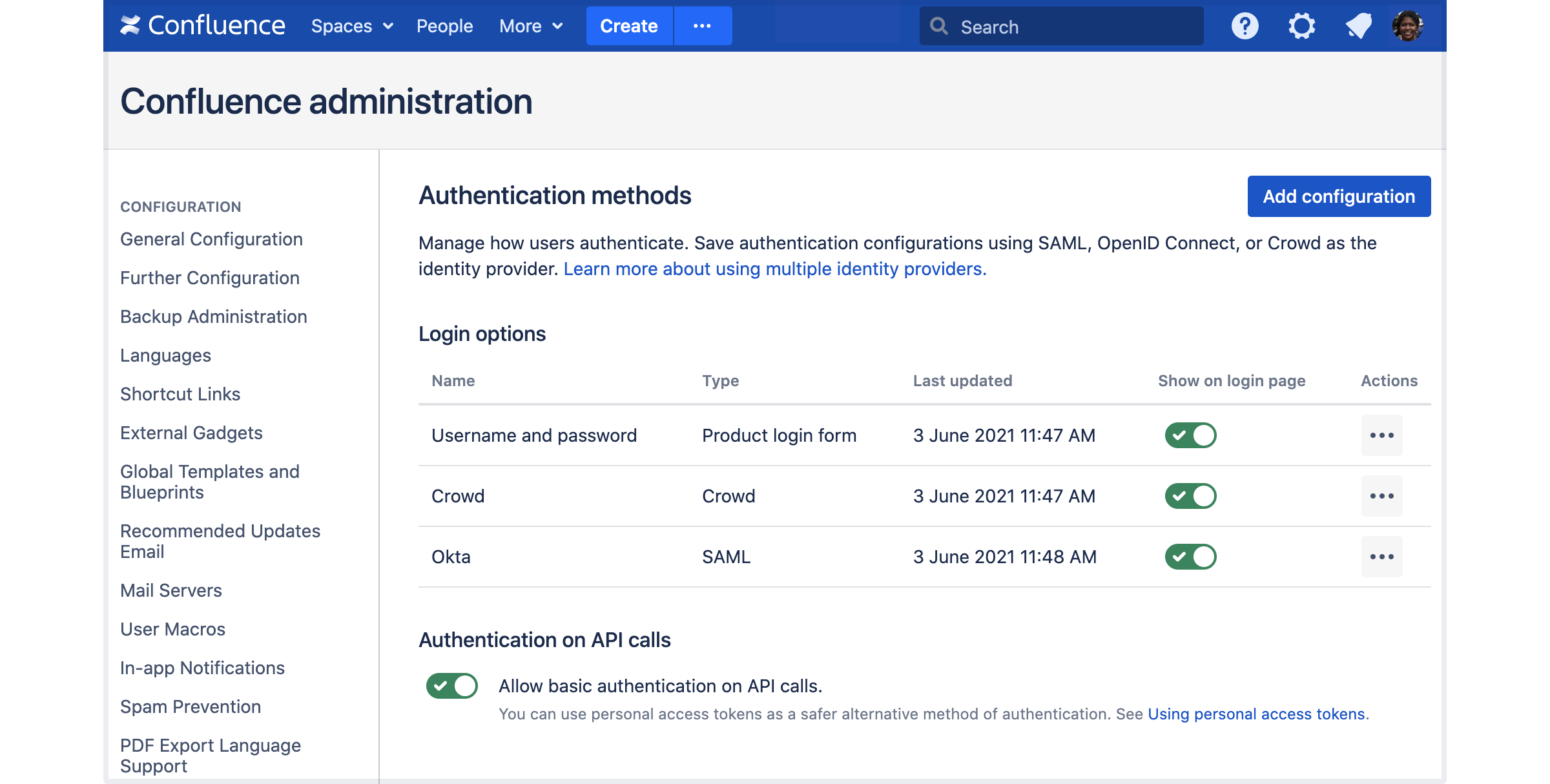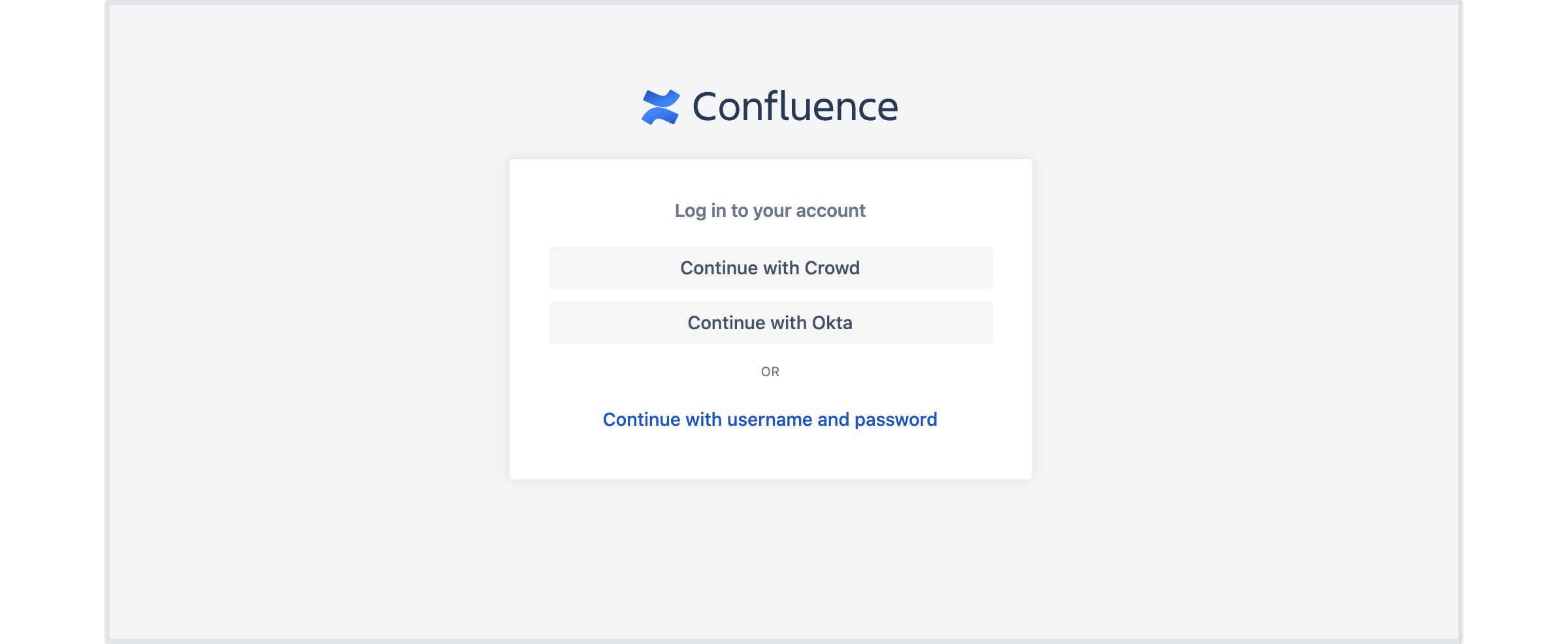Confluence 7.16 Release Notes
31 January 2022
We're excited to present Confluence 7.16.Highlights
More
Read the upgrade notes for important info about this release and see the full list of issues resolved.
Thanks for your feedback
More than 400 votes satisfied!
Clean up historical data automatically
For DATA CENTER
When you edit a page or file, Confluence stores the previous content so you can restore it if you need to. Over time these historical versions start to add up, increasing the size of your database and file system. It's not uncommon for some pages to have hundreds of historical versions.
Now you can set retention rules to specify how long to keep this historical data. You tell Confluence how much historical data you want to keep (by number or age of the versions), and then a scheduled job will delete the excess, in small batches, so as not to impact your site's performance.
The scheduled job runs every 10 minutes by default, so it's important that you take some time to plan your retention rule strategy before setting a rule, as historical versions and trash will be permanently deleted almost immediately.
Complete flexibility
We know that some organizations need to keep all historical versions for regulatory or compliance reasons, while others may want to minimize their footprint by removing historical versions more aggressively. To cater for both situations, you can define exemptions for spaces that have special requirements, then set global retention rules that apply to the rest of the content in your site. We keep everything by default, so there's no surprises.
Delegate clean up responsibilities
Allow rules to be configured in Space Tools for each space, by space administrators, who know the content well, or restrict this responsibility to system administrators, through the global administration. This can be set for your whole site, or on a space by space basis using exemptions.
Learn more about retention rules
Faster permissions checks for complex sites
For SERVER DATA CENTER
There are many situations where Confluence needs to check the current user's permissions in order to determine what to display. For example, to render the Task report macro, we need to find all the pages with a task assigned to the user, then check they have permission to see the spaces and pages the task appears on. These checks can consume a lot of memory and can make some parts of Confluence load slowly, especially if your permissions are complex.
The faster permissions service changes the way permissions information is stored, which allows Confluence to check permissions on a large number of pages more quickly. It can provide a significant performance improvement in sites with a lot of content and complex permissions.
If you only have a small amount of content or simple permissions (just a few groups, or few nested page restrictions) this service is unlikely to make your Confluence site significantly faster.
Learn more about the faster permissions service
Use multiple identity providers (IdPs)
For DATA CENTER
You can now configure multiple SAML or OpenID Connect identity providers for single-sign on (SSO) authentication.
Go to Administration menu , then General Configuration > Authentication methods (formerly SSO 2.0) to check it out.
When only one SSO authentication method is configured, users will be redirected to that method for authentication.
If you enable more than one authentication method, your users will see a login page with the available options. You can customise the button labels to suit your team's terminology.
Learn how to configure multiple authentication methods
Block basic authentication
For DATA CENTER
If you've configured Confluence to use single sign-on (SSO) authentication you can now prevent people from authenticating with a username and password. You can disable basic authentication for the login screen, the API, or both.
You should encourage your users to switch to personal access tokens in any scripts they may be using, as these scripts will stop working once you disable basic authentication.
Learn how to disable basic authentication
Exclude spaces from the data pipeline
For DATA CENTER
The data pipeline allows you to export Confluence data for analysis in your favorite business intelligence tool.
You can now exclude spaces from the export by adding them to an opt-out list. This is useful if you don’t need to report on particular spaces, or they contain sensitive content that you’d prefer not to export.
For more information on how to add and remove spaces from the opt-out list, see the REST API documentation.
What else is new?
- You can now access tools and tips to help you deal with unwanted data in one handy page. Go to Administration menu , then General Configuration > Clean up to check it out.
- Added support for Microsoft SQL Server 2019.
Resolved issues
For full details of bugs fixed and suggestions resolved, head to Jira.
Issues resolved in 7.16.5
Released on 05 July 2022
Issues resolved in 7.16.4
Released on 03 June 2022
Issues resolved in 7.16.3
Released on 14 March 2022
Issues resolved in 7.16.2
Released on 01 March 2022
Issues resolved in 7.16.1
Released on 15 February 2022
Issues resolved in 7.16.0
Released on 31 January 2022
Get ready to upgrade
Before you upgrade, check out the Confluence 7.16 Upgrade Notes for important changes in this release, then follow the usual upgrade instructions to upgrade your site.
Been a while since your last upgrade? Check out our upgrade matrix for a bird's-eye view of the most important changes since Confluence 7.4 LTS.
Don't forget to renew your software maintenance. Renew now
Credits
Our wonderful customers...
You play an important role in making Confluence better. Thanks to everyone who participated in interviews with us, made suggestions, voted, and reported bugs!

